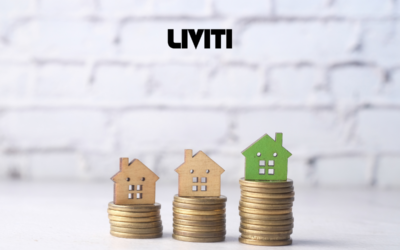Investing in rental properties is gaining traction as a powerful tool to escape the traditional work routine and pursue financial independence.
This strategic approach allows them to generate a steady stream of passive income, empowering them to pursue their passions, spend more time with loved ones, and ultimately, take control of their financial destiny.
This article seeks to guide you on the different aspects of investing in rental properties in Australia, helping you make an informed decision.
Let’s delve into the key questions surrounding this investment avenue.
Why is a Rental Property a Better Investment than Stocks?
Comparing investing in rental properties to stocks, the former stands out for several reasons. Rental properties offer more predictable cash flows through rental incomes. Moreover, real estate appreciates over time, and you have more control over your investment, influencing property value through renovations and choosing the right tenants.
Furthermore, while stock markets can be volatile and influenced by many uncontrollable factors, real estate offers relative stability grounded in tangible assets and the ever-present demand for housing. Here is a detailed comparison between investing in stocks and real estate to help you more precisely weigh the pros and cons.
How to Investing in Rental Properties
1. Financial Foundations:
Beginning with the basics, ensure you’re on solid financial footing before venturing into rental property investment. Assemble a dependable financial team, including accountants and financial planners, to navigate the intricacies of property investment in Australia.
2. Dive into Real Estate Education:
While global real estate principles can apply, the Australian market has unique nuances. Identify regions and suburbs ripe for investment. Consider enrolling in a specialised real estate investment course to strengthen your grasp of the Australian property landscape.
3. Upkeep and Maintenance Costs:
Beyond the purchase price, account for the ongoing upkeep of your property. This includes regular maintenance, repairs, and potential renovations. These costs are inevitable, and budgeting for them ensures a smooth investment journey.
4. Legal Landscape:
Australia has specific regulations governing rental properties. Familiarise yourself with the landlord-tenant laws to ensure your rights, and those of your tenants, are protected. Government resources like the Residential Tenancies Authority can provide comprehensive insights.
5. Taxes and Duties:
Rental income is taxable in Australia, and additional land taxes or council rates may apply depending on your property and its location. The Australian Taxation Office provides detailed information on property-related taxes.
6. Property Management:
Knowing property management regulations is vital whether you manage the property yourself or hire professionals. This includes understanding rental agreements, handling maintenance requests, and dealing with tenancy disputes.
7. Insurance Implications:
Several insurance types cater to rental properties in Australia. Landlord insurance, for instance, can cover tenant-related risks, such as property damage or loss of rental income. The Insurance Council of Australia offers resources and guides on available insurance for property owners.
8. Engage with Experts:
While research and self-education are valuable, aligning with seasoned professionals can be a game-changer. Collaborate with real estate agents for property selection, legal advisors for contractual nuances, and property managers to ensure the smooth day-to-day running of your rental.

How to Start Investing in Rental Properties
Starting the journey towards investing in rental properties involves meticulous planning and strategy. After laying the financial groundwork and acquiring the necessary knowledge:
1. Identify Your Investment Goals
- Short-Term vs Long-Term: Are you aiming to capitalise on short-term rental yields, or are you more interested in the long-term capital growth of the property? Your goal will dictate the type of properties you should look for and where.
- Diversification: Consider if you want a diversified portfolio with different types of properties or if you prefer to focus on a specific niche, such as residential or commercial.
2. Budget Wisely
- Initial Costs: Apart from the down payment, account for closing costs, inspection fees, and initial repairs.
- Ongoing Costs: Budget for regular maintenance, property taxes, insurance, and potential homeowner association fees.
- Emergency Fund: Setting aside a fund for unexpected repairs or vacancies is prudent, ensuring that you can always cover your costs.
3. Property Selection
- Target Demographic: Understand the needs and desires of your ideal tenant. Are they students, families, or professionals? Their preferences will influence the property type and location.
- Location: The age old phrase ‘location, location, location’ holds. Proximity to schools, public transport, and amenities can boost a property’s appeal.
- Property Condition: Consider the property’s age, state of repair, and potential renovation costs.
- Reference Guides: Make use of comprehensive property selection guides to better inform your choices.

4. Financing
- Loan Types: Various mortgage options are available, from fixed to variable rates, each with pros and cons.
- Shop Around: Different banks and lenders offer different terms. It’s wise to get multiple quotes and find the most favourable conditions. Or better yet, speak to a broker who will do the research for you.
- Deposit: Understand the minimum deposit required and the impact of paying more or less on your future returns.
5. Property Management
- Self-Management: If you choose to manage the property yourself, be prepared to handle tenant queries, repairs, and the legalities of renting.
- Professional Services: Hiring a property management company can alleviate daily responsibilities, but it comes at a cost. Weigh the convenience against the fees involved.
- Tenant Relations: Maintaining good relations with tenants can lead to longer tenancies and fewer vacancies.
What Should I Look for in a Rental Property?
1. Location:
- Amenities: Seek properties close to essentials like schools, transport, and shops, ensuring tenant appeal.
- Safety: Opt for neighbourhoods with low crime rates.
- Future Prospects: Investigate upcoming developments or infrastructure projects in the area.
- Job Opportunities: Proximity to employment centres can reduce vacancies.
2. Financing:
- Rates: Shop for competitive mortgage rates to manage costs.
- Deposit: Balance between a larger deposit and maintaining liquidity.
- Hidden Costs: Factor in closing costs, taxes, and insurance.
3. Cash Flow:
- Rental Estimates: Gauge potential rental income based on local comparables.
- Expenses: Subtract monthly costs from expected income.
- Profitability: Aim for a property where rental income surpasses expenses.
- By focusing on these pivotal areas, you’ll be better equipped to select a profitable rental property.
Is Investing in Rental Property a Good Idea?
Whether investing in rental properties is a good idea warrants a deep exploration. Rental property investment offers a steady income stream, and with the right property, you can enjoy substantial capital growth over time. Additionally, it provides tax benefits, including deductions on mortgage interest. It’s helpful to identify property investment mistakes you should avoid and know where to start.
When investing in rental properties, focus on a good location close to amenities, safe neighbourhoods, and areas with job opportunities. On the financial side, aim for a reasonable mortgage rate and remember that a down payment affects your loan terms and available cash. Keep an eye on hidden costs like closing fees and insurance.

Profitability hinges on ensuring that the rental income covers all these expenses and leaves a margin. Lastly, in Australia, landlords can benefit from tax deductions on mortgage interest, repair costs, and property depreciation. Understanding these factors will help you make a smart investment decision.
When choosing a rental property, it’s essential to focus on its location, proximity to amenities, safe neighbourhoods, and employment areas. Financially, aim for an attractive mortgage rate, and be mindful of the down payment’s impact on your loan terms and liquidity. Always account for hidden expenses like closing fees and insurance.
The rental income should cover all costs with a surplus for the property to be profitable. In Australia, tax benefits come in the form of deductions on mortgage interest, repair costs, and property depreciation. Additionally, there’s the strategy of negative gearing, where costs surpass the rental income, leading to a taxable loss offset against other incomes. Importantly, rental properties also offer long-term appreciation. As property values and rents usually rise over time, they act as a safeguard against inflation, ensuring your wealth’s preservation and potential growth.
What Sort of Rental Property Should You Buy?
Opt for properties in good locations with proximity to amenities. Urban areas favour apartments, while family homes thrive in the suburbs.
How Will You Manage Your Rental Property?
Choose between:
- Self-management: Directly handle tenant needs, rent, and maintenance. Cost-effective but time-intensive.
- Property Management Company: They oversee daily operations for a fee, which is ideal for those with multiple properties or limited time.
Common Rental Property Investing Mistakes:
- Overlooking additional expenses beyond the mortgage.
- Not accounting for potential vacancies.
- Ignoring regular maintenance.
- Skipping thorough tenant background checks.
Alternatives to Owning Rental Property:
- REITs: Invest in real estate income without direct property ownership.
- Crowdfunding: Pool funds with other investors for real estate ventures.
- Real Estate Partnerships: Join ventures led by experienced managers.
- Flipping Properties: Buy, renovate, and sell properties for profit.
Each option varies in commitment, risk, and return, so choose based on your goals and risk appetite.
Conclusion: Is it Good to Invest in Rental Property in Australia?
Reflecting on the prospects of investing in rental properties in Australia, it indeed presents a favourable landscape for individuals seeking to escape the constraints of a 9-5 job. With a strategic approach, sound financial planning, and an understanding of the market dynamics, investing in rental property emerges as a solid pathway to securing financial freedom and a prosperous future.
While it comes with its challenges, the potential benefits far outweigh them, making it a worthy contender in your investment portfolio. It is indeed a good idea to invest in rental property in Australia, providing an avenue for steady income, capital growth, and a tangible asset that stands the test of time.
Taking the first step towards this investment journey can transform your financial landscape, offering a secure and fruitful future. It’s time to pave your path towards financial freedom, escaping the 9-5 grind through wise rental property investments in the vibrant land down under.
Ready to leap into the world of property investment? Discover your potential with us as partners in building a prosperous financial future through intelligent property investments.




